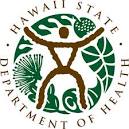
One of the key steps in being able to contain the spread of COVID-19, according to all health experts including those in the state, is contact tracing. According to Hawaii State Department of Health, that means when new cases of COVID-19 are identified, disease investigators work quickly to make sure the case is isolated, the person is instructed to stay away from others, and to self-isolate in their home with no or limited contact with others and limited to no shared spaces. They will then identify and quarantine their close contacts and monitor those contacts for symptoms of the disease.
Hawaii State Department of Health has released a document detailing the steps that are followed, starting with identifying the case, and then asking the person for a list of their close contacts. “Close contact” is defined as face-to-face and less than 6 feet for 10 to 30 minutes or longer. People can be contagious as early as 2 days before their symptoms begin.
Everybody identified as a “close contact” is contacted and they are required to self-isolate for 14 days. If those people develop symptoms of COVID-19, they will then be tested.
There has been controversy, nationwide and within Hawaii, about requiring people to have symptoms before being tested, given that it’s clear that people may have COVID-19 with no symptoms. In press conferences, Lt. Governor Josh Green, M.D., has called for testing all close contacts. Dr. Bruce Anderson, PhD, head of State Department of Health, has said in some cases, asymptomatic contacts will be tested.
The State Department of Health announced on April 29 that it is now using a new digital tool to assist in contact tracing and monitoring. Until now, Department of Health employees have undertaken the time-consuming task of daily phone calls to monitor those at risk for infection. Those individuals being monitored can now input and upload information on their health status on their own. They take a less than 5-minute online survey and transmit their responses directly and securely to the Department of Health. All information is encrypted to protect the privacy of the individual.
Major General Kenneth Hara, head of Hawaii Emergency Management Agency (HIEMA), says he’s offered National Guard personnel to assist with contact tracing. Dr. Mark Mugiishi, MD, head of HMSA says he’s had volunteers from the nursing school, as well.
State Department of Health’s website notes it has 30 contact tracers who have traced, so far, 1,636 contacts. They are also monitoring 979 travelers who are supposed to be on 14-day quarantines. In a State House hearing on Monday, Dr. Mugiishi said what’s needed is 30 contact tracers for each 100,000 population, which for the State’s population of 1.4 million alone would be 420 people and for the total of 3 million that could be anticipated with travelers, at least 900 would be needed.
Anybody interested in the CDC’s take on Contact Tracing…click here.
https://health.hawaii.gov/coronavirusdisease2019/files/2020/04/What-Is-Contact-Tracing-04.13.2020.pdf